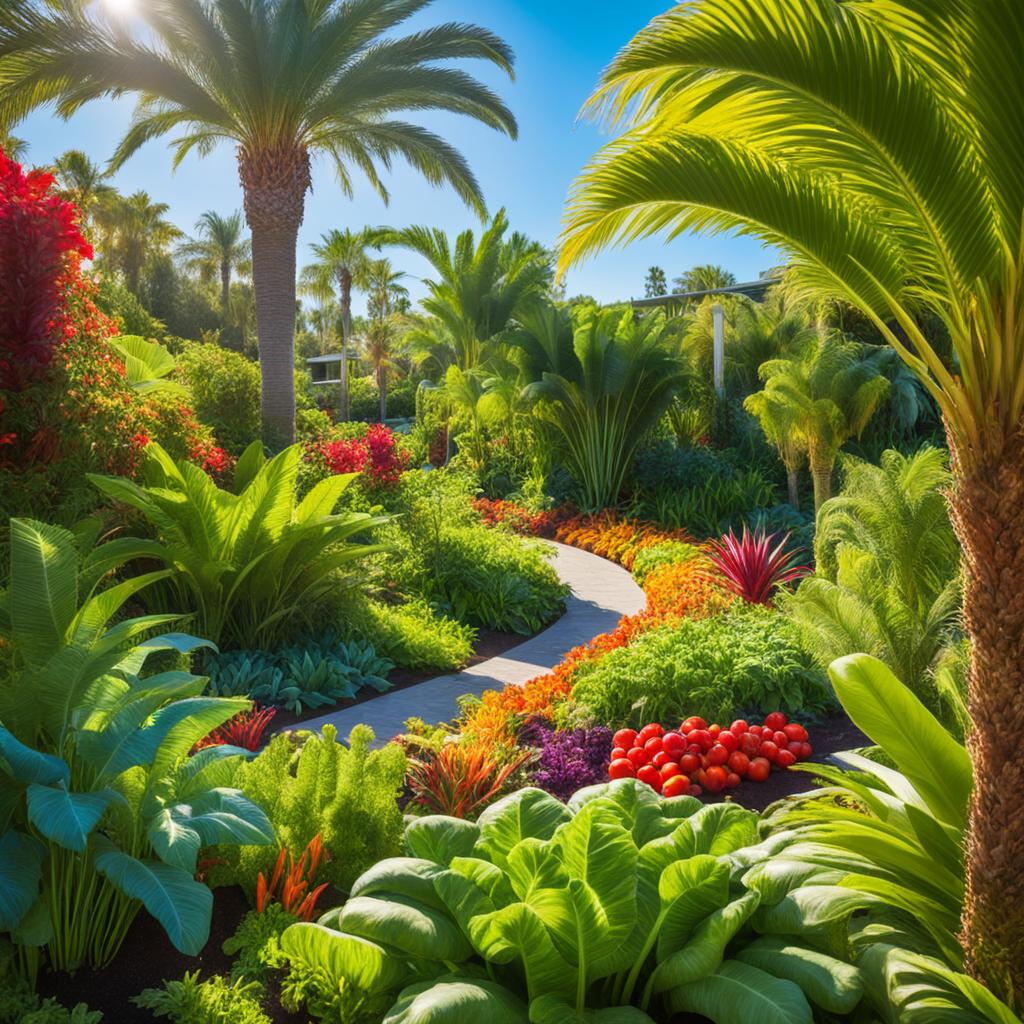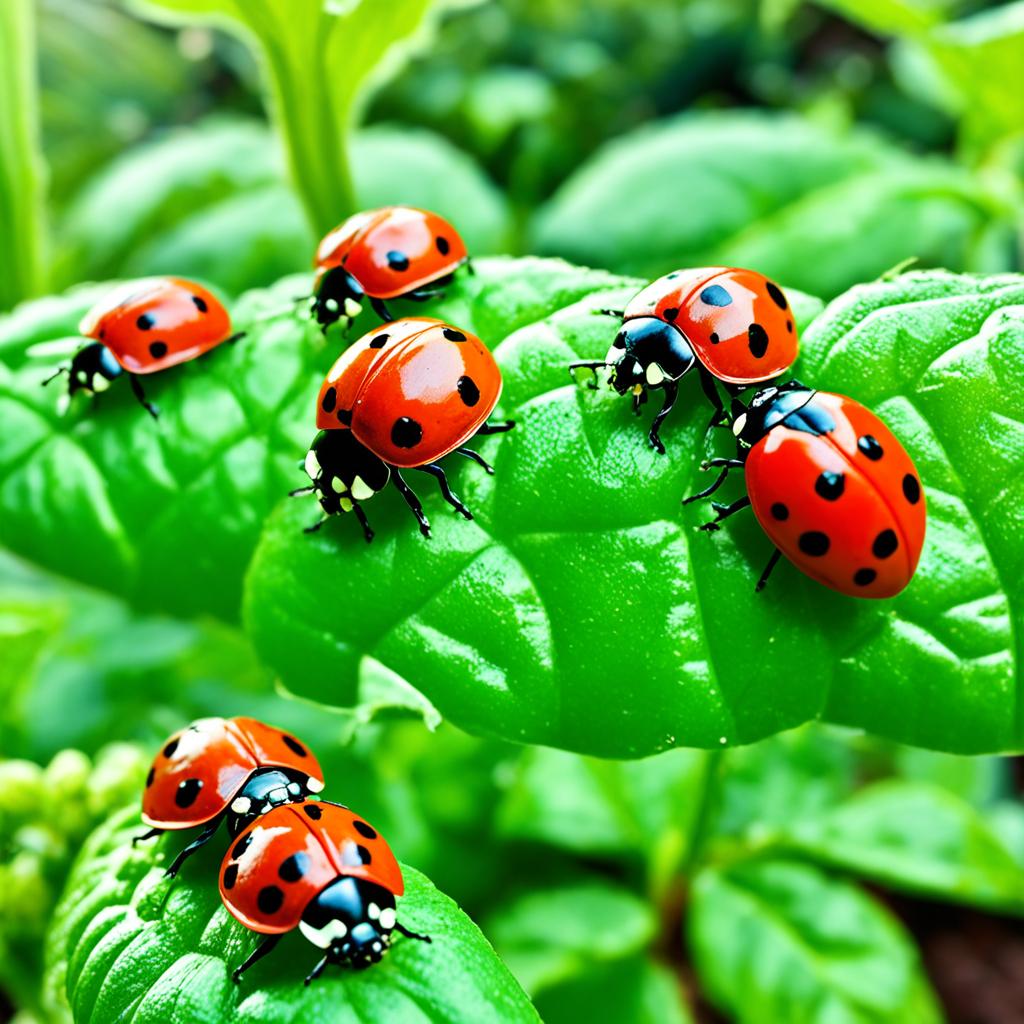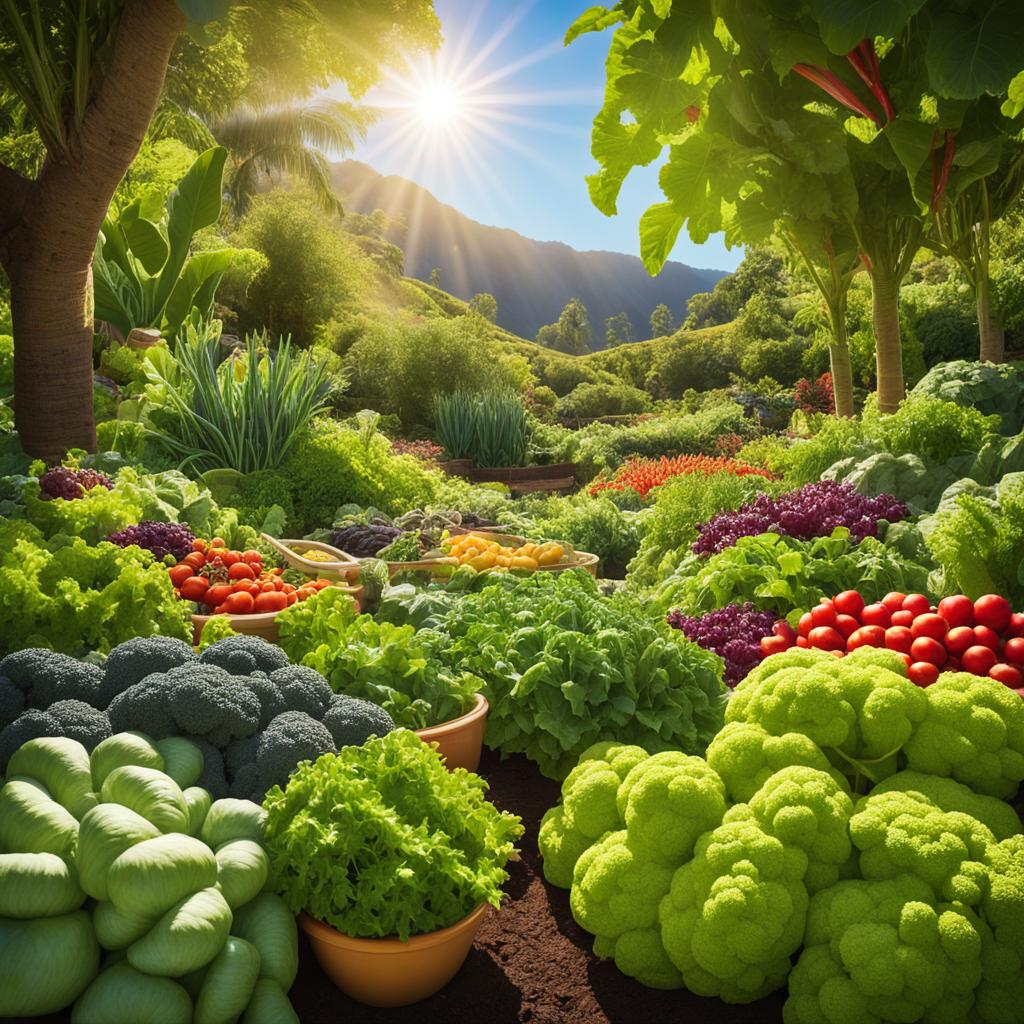When it comes to vegetable gardening, one common challenge many gardeners face is the limited growing season. However, have you ever wondered if it’s possible to grow vegetables year round in Hawaii?
Hawaii’s warm and humid tropical climate, along with its abundant sunshine and volcanic soil, makes it an ideal place for sustainable vegetable gardening. The islands’ varied topography and elevation create diverse microclimates, offering different growing seasons throughout the year. This extends the overall growing season and allows for continuous cultivation of a wide variety of crops.
But what are the best vegetables to grow in Hawaii? How can you overcome the challenges that come with gardening in such a unique environment? And what tips can help you establish a successful Hawaiian vegetable garden?
In this article, we will explore the ideal climate for year-round vegetable gardening in Hawaii, the challenges you may encounter, the best vegetables to grow, and essential tips for a thriving garden. Get ready to unlock the secrets of sustainable vegetable gardening in the tropical paradise of Hawaii!
The Ideal Climate for Year-Round Vegetable Gardening in Hawaii

Hawaii’s warm tropical climate, with temperatures ranging from 65 to 85°F, provides the perfect environment for year-round vegetable gardening. The abundant sunshine in the region promotes plant growth and allows for continuous cultivation. The volcanic soil found in Hawaii is nutrient-rich and provides an excellent foundation for growing crops. The variation in elevation and topography creates diverse microclimates throughout the islands, resulting in different growing seasons for different areas. This enhances the overall growing season for Hawaii as a whole, making it possible to grow a wide variety of vegetables throughout the year.
Whether you’re a seasoned gardener or just starting out, Hawaii’s tropical climate offers ideal conditions for vegetable gardening. The warm temperatures provide optimal growing conditions for a wide range of vegetables, ensuring they thrive and produce a bountiful harvest. With the right knowledge and techniques, you can create a successful and sustainable garden in your own backyard.
Gardening Microclimates in Hawaii
One of the unique features of gardening in Hawaii is the presence of gardening microclimates. Due to the islands’ varied topography and elevations, different areas within Hawaii experience distinct climates and growing conditions. This means that while certain vegetables may thrive in one part of the island, they may not do as well in another. Understanding the microclimates in your specific area is crucial for selecting the right crops and maximizing your gardening success.
For example, coastal areas tend to have a milder climate and are well-suited for growing heat-tolerant vegetables like tomatoes, peppers, and cucumbers. In contrast, higher elevation areas experience cooler temperatures and can support cool-season crops such as lettuce, kale, and carrots. By harnessing the unique microclimates in your vicinity, you can create a diverse and productive garden that caters to a wide range of vegetables.
Additionally, the presence of trade winds in Hawaii plays a role in microclimate variation. Windward regions receive more rainfall and have higher humidity levels, making them ideal for crops that thrive in these conditions. In contrast, leeward areas are drier and receive less rainfall, requiring careful irrigation and selection of drought-tolerant plants.
The Benefits of a Tropical Climate for Vegetable Gardening
The tropical climate in Hawaii provides several advantages for vegetable gardening. The warm temperatures throughout the year eliminate the need to worry about the first or last frost, allowing for continuous cultivation and high-yield harvests. The ample sunshine provides abundant energy for photosynthesis, promoting healthy plant growth and high nutrient content in the harvested vegetables.
Furthermore, the volcanic soil found in Hawaii is rich in essential minerals and nutrients, providing an excellent foundation for plant growth. This fertile soil supports the development of strong root systems, which leads to healthier and more productive plants. With the right soil management techniques, such as regular organic matter additions and proper pH adjustments, you can ensure your plants have access to the nutrients they need to thrive.
Overall, the ideal combination of a warm tropical climate, diverse microclimates, and nutrient-rich volcanic soil makes Hawaii an excellent location for year-round vegetable gardening. So whether you’re a beginner or an experienced gardener, take advantage of Hawaii’s unique conditions to create a vibrant and abundant vegetable garden.
Overcoming Challenges in Hawaiian Vegetable Gardening

Vegetable gardening in Hawaii poses unique challenges that every gardener must navigate. The absence of cold winter temperatures allows pests like nematodes, fruit flies, pepper weevils, and slugs to thrive year-round, posing a constant threat to your plants. Effective pest control is essential to ensure the success of your Hawaiian garden.
The high rainfall in certain microclimates can lead to fungal diseases and root rot, jeopardizing the health of your vegetables. To combat this, careful monitoring and preventive measures such as proper drainage and adequate spacing between plants are necessary.
Soil erosion, caused by the combination of high winds and heavy rain, is a common issue in some areas of Hawaii. This erosion can strip away valuable topsoil, leaving your plants vulnerable and hindering their growth. Additionally, the salt spray carried by ocean breezes can make the native soil too saline for certain crops.
However, there are solutions to these challenges. Implementing container gardening techniques allows you to control your plant’s environment and protect them from pests. Greenhouse gardening provides a controlled environment that shields plants from strong winds and pests while optimizing growing conditions. Raised beds can help improve drainage and prevent soil erosion.
To protect your garden from strong winds, constructing windbreaks using natural or artificial barriers can be highly effective. Additionally, using floating row covers can shield your plants from excessive rain and wind while allowing them to receive ample sunlight and ventilation.
By employing these strategies, you can overcome the challenges of vegetable gardening in Hawaii and create a thriving garden that yields an abundance of fresh, homegrown produce.
Best Vegetables for Year-Round Gardening in Hawaii

In Hawaii’s year-round warmth, you have the opportunity to grow a wide variety of vegetables that thrive in tropical climates. Whether you prefer cool-season vegetables, warm-weather favorites, or staple Hawaiian crops, there are plenty of options for a productive year-round garden.
Cool-season vegetables:
- Arugula
- Lettuce
- Collards
- Kale
- Beets
- Carrots
Spring season vegetables:
- Pole beans
- Cabbages
- Kale
- Peppers
- Onions
- Kalo
- Sweet potato
- Radish
- Cucumber
- Cassava
Late-blooming and heat-tolerant plants:
- Spinach
- Bok choy
- Tomatoes
- Eggplant
- Potato
- Celery
- Corn
- Hawaiian chili pepper
Staple Hawaiian crops:
- Sweet potato
- Breadfruit
- Cassava
If you’re interested in growing herbs, many varieties can be successfully cultivated in Hawaii’s climate. Consider adding dill, mustard, basil, green onions, peppers, curry leaf, lemongrass, cilantro, parsley, oregano, lavender, and chamomile to your garden for a flavorful addition to your meals.
| Cool-Season Vegetables | Spring Season Vegetables | Late-Blooming and Heat-Tolerant Plants | Staple Hawaiian Crops |
|---|---|---|---|
| Arugula | Pole beans | Spinach | Sweet potato |
| Lettuce | Cabbages | Bok choy | Breadfruit |
| Collards | Kale | Tomatoes | Cassava |
| Kale | Peppers | Eggplant | |
| Beets | Onions | Potato | |
| Carrots | Kalo | Celery | |
| Sweet potato | Corn | ||
| Radish | Hawaiian chili pepper | ||
| Cucumber | |||
| Cassava |
Tips for Successful Hawaiian Vegetable Gardening
To ensure success in your Hawaiian vegetable garden, there are several tips and techniques you can employ.
One popular option is container gardening, which provides an erosion-proof growing medium and allows for easy pest and disease control. By using containers, you can maximize space and move your plants as needed to take advantage of the best sunlight and growing conditions.
Greenhouse gardening is another effective method in Hawaii. A greenhouse provides protection from windburn and flying pests, creating an ideal environment for your vegetables to thrive. It also extends the growing season by providing warmth during cooler months.
Raised beds are particularly beneficial in Hawaii due to their improved drainage. They prevent soil compaction and allow for better root growth. Additionally, raised beds can be filled with organic soil amendments to ensure your plants have the necessary nutrients to thrive in Hawaiian gardens.
Protecting your delicate vegetables from damaging winds is crucial. You can use windbreaks or construct fences/hedges to minimize the impact of strong gusts. Another option is to use floating row covers, which are inexpensive net coverings that provide protection similar to greenhouses. They can be easily removed to allow pollination by beneficial insects.
Regular fertilization and maintenance are key to healthy plant growth and increased productivity. Use organic fertilizers and follow the recommended feeding schedule for your vegetables. Don’t forget to water your plants regularly and monitor them for any signs of pests or diseases.
Lastly, when planning your Hawaiian vegetable garden, choose the right vegetables for the climate and microclimates of your specific location. Some vegetables are better suited for cool or warm weather, so make sure to consider the unique conditions of your area.
By following these tips and techniques, you can create a successful Hawaiian vegetable garden, whether you’re into container gardening, greenhouse gardening, or utilizing raised beds. With proper fertilization, maintenance, and protection, you’ll be able to enjoy a bountiful harvest of fresh, homegrown vegetables.
FAQ
Q: Can you grow vegetables year round in Hawaii?
A: Yes, Hawaii’s warm and humid tropical climate, along with its abundant sunshine and volcanic soil, makes it an ideal place for year-round vegetable gardening.
Q: What is the ideal climate for year-round vegetable gardening in Hawaii?
A: Hawaii’s warm tropical climate, with temperatures ranging from 65 to 85°F, provides the perfect environment for year-round vegetable gardening. The varied topography and elevation of the islands create diverse microclimates, allowing for different growing seasons and extending the overall growing season for the entire region.
Q: What challenges are there in Hawaiian vegetable gardening?
A: Vegetable gardening in Hawaii comes with challenges such as year-round pests like nematodes, fruit flies, pepper weevils, and slugs. High rainfall in certain microclimates can lead to fungal diseases and root rot. Soil erosion caused by high winds and heavy rain is also a common issue in some areas.
Q: What are the best vegetables for year-round gardening in Hawaii?
A: Some of the best vegetables for year-round gardening in Hawaii include bananas, papayas, avocados, citrus fruits, tomatoes, peppers, lettuce, cucumbers, arugula, collards, kale, beets, carrots, pole beans, cabbages, kalo, sweet potato, radish, cucumber, cassava, spinach, bok choy, eggplant, potato, celery, corn, Hawaiian chili pepper, sweet potato, breadfruit, and cassava. Additionally, a variety of herbs can be grown such as dill, mustard, basil, green onions, peppers, curry leaf, lemongrass, cilantro, parsley, oregano, lavender, and chamomile.
Q: What are some tips for successful Hawaiian vegetable gardening?
A: Some tips for successful Hawaiian vegetable gardening include container gardening, greenhouse gardening, raised beds, windbreaks, and floating row covers. Regular fertilization and maintenance are also crucial for healthy plant growth and increased productivity. It is important to choose the right vegetables for the climate and microclimates, and follow recommended planting schedules.
